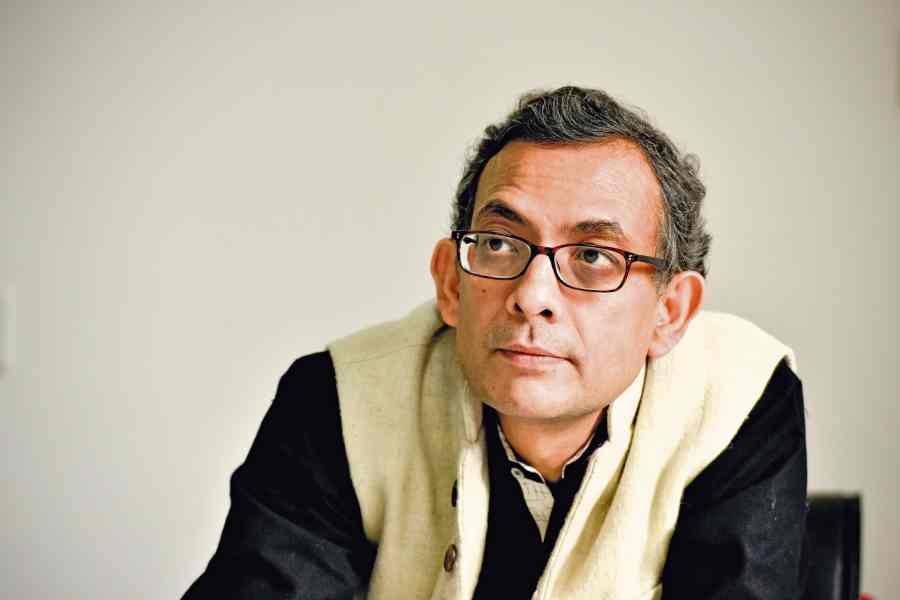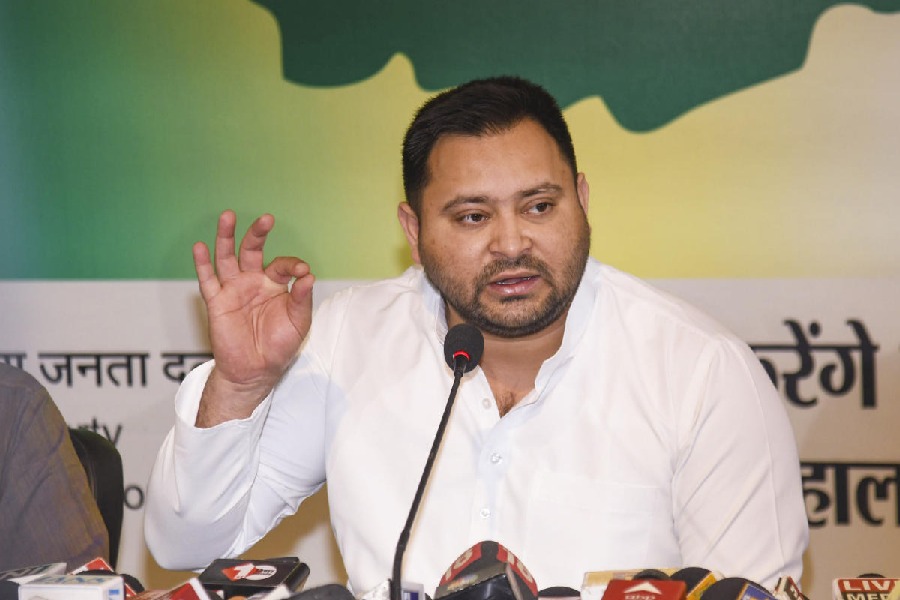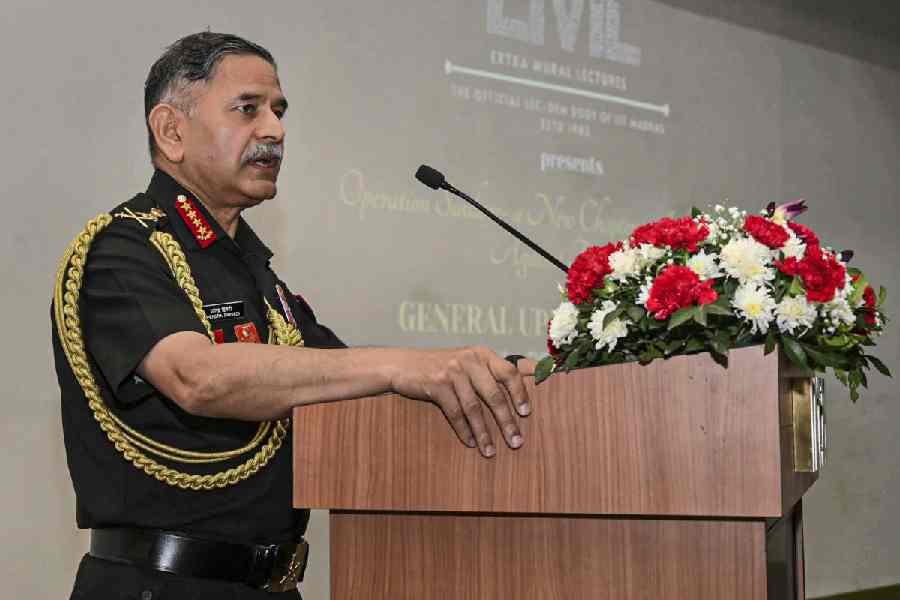 |
| Partho Sarothy (right) performs at the Indian Institute of Business Management auditorium accompanied by Aashish Pal on tabla, in Patna on Wednesday. Picture by Nagendra Kumar Singh |
Patna, Aug. 10: Indian Institute of Business Management students had a date with Indian classical music, courtesy a sarod recital organised by Spic Macay at the institute’s auditorium today.
Calcutta-based Partho Sarothy, an internationally acclaimed sarod player, took just 45 minutes to mesmerise the students and faculty members present in the auditorium through the rendition of different ragas.
Inviting queries from the students on his art, the artiste from Maihar Gharana, said: “It is wonderful to come here and perform. I feel privileged to be doing a programme for Spic Macay, who are promoting classical music so well.”
Sarothy, in the course of his performance, acquainted the management students with the finer points of the sarod, its features and how it works. “Sarod originated in Afghanistan. The older version of the instrument was called rabab. A sarod has 25 strings four of which are the main strings, while the rest are supportive or sympathetic strings. We use a striker made of coco- nut shell to play the strings,” said Sarothy.
Accompanied by Aashish Pal on the tabla, Sarothy played two ragas — the north Indian Bhupal Todi and the south Indian Malaya Marutam — at the recital. Proving his mastery in both styles of music, Sarothy displayed the trademark of Maihar Gharana in playing the three-level strings — upper, middle and lower — of the sarod.
He also displayed to his audience laykari and how to jump from one note to another on several occasions during his performance, adding charm to the show.
Trained under Ustad Dhyanesh Khan, the son and disciple of legendary sarod player Ustad Ali Akbar Khan, Sarothy clearly has a solid foundation in classical music, which he said is an exclusive form of art. “Indian classical music is the most beautiful art form. Our culture has affluent music and the transition of notes from monotone to seven notes can be traced back to the Vedas and our tradition. Whereas in Rigveda, the vedic hymns were chanted in monotone, Gatha, a traditional performance, was played in two notes. In Samaveda, the vedic hymns were sung in three notes. Indian classical music is a more improvised form, which is expressed through different ragas that have a definite pattern and definite note of their own,” said Sarothy.
When The Telegraph asked Sarothy if instrumental music was less popular than vocals, he said: “I don’t think that instrumental music is less popular than vocals. Both forms have their own charm. Their only difference is in their rendition. Both are very soothing to ears.”
Pooja Kumari, a student of the management institute, said: “This was an unforgettable experience. I had never attended a classical music programme. Before I came to the show, I did not think it would be anything great. But as soon as the programme started, nothing else mattered to me. It was very soulful.” Tripti Krishna, another student, said: “I had never heard sarod in my life. It was simply great.”










